A team of materials scientists and chemists have taken inspiration from sea shells found on the beach to create a composite material from dissimilar 'ingredients'. Their technique could be used to make ceramics with high resistance to cracking - which could in turn be used in crack-resistant building materials and bone replacements.
Mar 8th, 2010
Read more
The agreement between the Centre for Nanoscience and Quantum Information (NSQI) at the University of Bristol, UK, and the California NanoSystems Institute (CNSI) at UCLA in the USA, forges a link between two of the world's foremost centres in nanoscience research.
Mar 8th, 2010
Read more
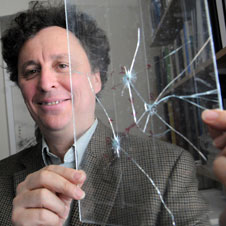 Northeastern University physicists have pioneered the development of large-scale computer simulations to assess how cracks form and proliferate in materials ranging from steel and glass to nanostructures and human bones.
Northeastern University physicists have pioneered the development of large-scale computer simulations to assess how cracks form and proliferate in materials ranging from steel and glass to nanostructures and human bones.
Mar 8th, 2010
Read more
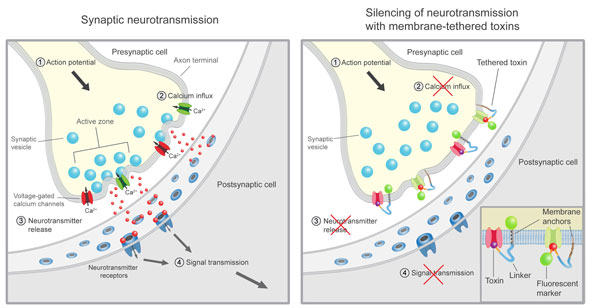 Neurotoxins from cone snails and spiders help neurobiologists to investigate the function of ion channels in neurons.
Neurotoxins from cone snails and spiders help neurobiologists to investigate the function of ion channels in neurons.
Mar 8th, 2010
Read more
Conducts heat just as well as most metals, yet remains an electrical insulator.
Mar 7th, 2010
Read more
Phenomenon causes powerful waves of energy to shoot through carbon nanotubes.
Mar 7th, 2010
Read more
MIT chemical engineers have built a sensor array that, for the first time, can detect single molecules of hydrogen peroxide emanating from a single living cell.
Mar 7th, 2010
Read more
The Nanoethics Group has announced the release of a new book to engage the rising tide of interest and concern over nanotechnology.
Mar 7th, 2010
Read more
Dr. Marc McKee, of McGill's Faculty of Dentistry and the Department of Anatomy and Cell Biology, is collaborating closely with Enobia Pharma Inc, a Quebec biotech company, to develop innovative treatments for serious genetic bone diseases.
Mar 6th, 2010
Read more
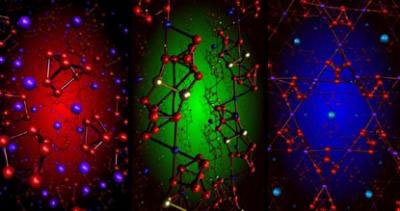 Shiv Khanna, Ph.D., a professor in the Virginia Commonwealth University (VCU) Department of Physics, together with colleagues from VCU, Penn State University and the California Nanosystems Institute, were recently highlighted in the Editor's Choice section of the journal Science for their work demonstrating how nanomaterials with control of specific properties can be created.
Shiv Khanna, Ph.D., a professor in the Virginia Commonwealth University (VCU) Department of Physics, together with colleagues from VCU, Penn State University and the California Nanosystems Institute, were recently highlighted in the Editor's Choice section of the journal Science for their work demonstrating how nanomaterials with control of specific properties can be created.
Mar 5th, 2010
Read more
 Researchers at the Max Planck Institute of Colloids and Interfaces and collaborators at the University of California at Santa Barbara and the University of Chicago believe they have uncovered the basis how marine mussels use the byssus, a bundle of tough and extensible fibres, to fasten securely to wave-swept rocky coastlines.
Researchers at the Max Planck Institute of Colloids and Interfaces and collaborators at the University of California at Santa Barbara and the University of Chicago believe they have uncovered the basis how marine mussels use the byssus, a bundle of tough and extensible fibres, to fasten securely to wave-swept rocky coastlines.
Mar 5th, 2010
Read more
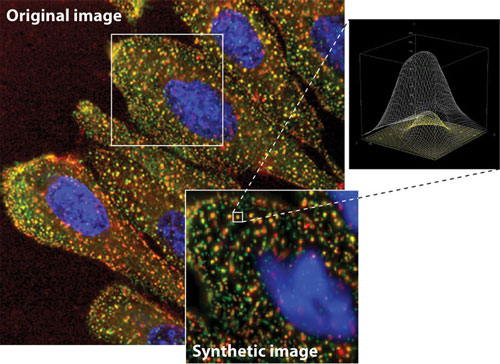 Scientists applied a new strategy to identify and characterize genes involved in endocytosis. For that a combination of high-resolution microscopy and quantitative image analysis enabled the scientists to investigate the effects of a large number of genes.
Scientists applied a new strategy to identify and characterize genes involved in endocytosis. For that a combination of high-resolution microscopy and quantitative image analysis enabled the scientists to investigate the effects of a large number of genes.
Mar 5th, 2010
Read more
Wissenschaftler lassen Licht selbst die kristallinen Strukturen bilden, in denen das Licht dann effektiv geleitet und gespeichert werden kann. Diese Technik koennte zum Beispiel zur Herstellung hocheffizienter Flachbildschirme eingesetzt werden.
Mar 5th, 2010
Read more
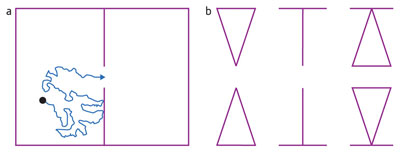 Geometric factors can have a strong influence on the seemingly random walk of objects across pores in a thin membrane
Geometric factors can have a strong influence on the seemingly random walk of objects across pores in a thin membrane
Mar 5th, 2010
Read more
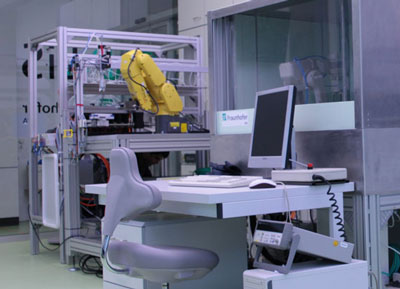 Automation is becoming increasingly important in the field of biotechnology, and the only mean of simultaneously testing thousands of substances on cells, or of creating artificial skin models at competitive prices. The location of Stuttgart Vaihingen, home to the Biopolis testing laboratory, which was officially opened on 9 February at the Fraunhofer Institute for Manufacturing Engineering and Automation (IPA), is playing a part in these developments.
Automation is becoming increasingly important in the field of biotechnology, and the only mean of simultaneously testing thousands of substances on cells, or of creating artificial skin models at competitive prices. The location of Stuttgart Vaihingen, home to the Biopolis testing laboratory, which was officially opened on 9 February at the Fraunhofer Institute for Manufacturing Engineering and Automation (IPA), is playing a part in these developments.
Mar 5th, 2010
Read more
Three inaugural collaborative research projects awarded a total of $2million by A*STAR and Japan Science and Technology Agency.
Mar 5th, 2010
Read more








 Subscribe to our Nanotechnology News feed
Subscribe to our Nanotechnology News feed